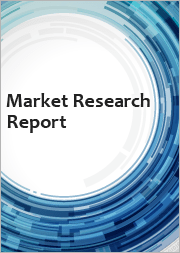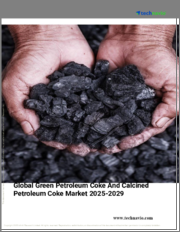
|
시장보고서
상품코드
1734952
세계의 석유 코크스 시장 : 등급별, 용도별, 지역별, 기회 및 예측(2018-2032년)Petroleum Coke Market Assessment, By Grade [Fuel Grade, Calcined Grade], By Application [Power Generation, Cement Kilns, Aluminum, Titanium Dioxide, Iron and Steel, Others], By Region, Opportunities and Forecast, 2018-2032F |
||||||
세계 석유 코크스 시장 규모는 2025-2032년의 예측 기간 동안 6.58%의 연평균 복합 성장률(CAGR)로 2024년 324억 9,000만 달러에서 2032년 540억 9,000만 달러로 확대될 것으로 예측됩니다. 세계 석유 코크스 시장은 알루미늄 제련에 사용되는 양극을 제조하기 위해 석유 코크스가 활용되는 알루미늄 산업 수요 증가로 인해 빠른 속도로 성장하고 있습니다. 또한, 전력 및 시멘트 수요 증가는 시멘트 및 발전소에서 저렴한 연료 상품으로 석유 코크스 수요를 증가시키고 있습니다. 또한, 신흥국의 산업화 확대는 에너지 및 건축자재 소비로 이어져 석유 코크스 소비량 증가를 유지하고 있습니다. 또한, 제철용 전극 제조에 석유 코크스를 사용함으로써 석유 코크스는 매우 시장성이 높은 상품이 되었습니다. 이산화티타늄(TiO2) 시장은 석유 코크스가 생산에서 환원제 역할을 하고 있으며, 이것이 촉진요인으로 작용하고 있습니다.
지리적으로 아시아태평양은 세계 석유 코크스 시장을 독점하고 있으며, 급속한 도시화와 거대한 정제 능력으로 인해 다양한 산업에서 석유 코크스 사용량이 많은 것으로 나타났습니다. 에너지 수요 증가와 첨단 정제 기술의 시너지 효과로 인해 석유 코크스 시장은 예측 기간 동안 계속 성장할 수 있습니다.
예를 들어, 인도의 석유 코크스 소비량은 2023년12 월에 다양한 용도로 전년 동기 대비 10% 이상 증가했습니다. 또한, 2025년 1월 Falcon Holdings Pvt Ltd는 인도 오디샤 주정부와 MoU를 체결하여 연간 생산능력 3만 톤의 이산화티타늄(TiO2) 공장을 설립하기로 했습니다. 이 공장은 페인트, 코팅제, 플라스틱, 섬유 등의 산업에서 증가하는 이산화티타늄 수요에 대응하기 위해 약 1억 2,400만 달러를 투자하여 오디샤 주에 큰 사회경제적 이익을 가져다 줄 것입니다. 오디샤 주정부는 이 프로젝트에 대한 열의를 표명하고 오디샤의 제조 기지로서의 지위를 강화할 것이며, TiO2 생산량이 증가함에 따라 석유 코크스 수요도 증가할 것이라고 밝혔습니다.
세계의 석유 코크스(Petroleum Coke) 시장에 대해 조사했으며, 시장 개요와 함께 등급별/용도별/지역별 동향, 시장 진출기업 프로파일 등의 정보를 전해드립니다.
목차
제1장 프로젝트의 범위와 정의
제2장 조사 방법
제3장 미국 관세의 영향
제4장 주요 요약
제5장 고객 소리
제6장 세계의 석유 코크스 시장 전망, 2018년-2032년
- 시장 규모 분석과 예측
- 시장 점유율 분석과 예측
- 등급별
- 연료 등급
- 소성 등급
- 용도별
- 발전
- 시멘트 가마
- 알루미늄
- 이산화티타늄
- 철강
- 기타
- 지역별
- 북미
- 유럽
- 아시아태평양
- 남미
- 중동 및 아프리카
- 기업별 시장 점유율 분석(주요 5개사 및 기타 - 금액별, 2024년)
- 등급별
- 2024년 시장 맵 분석
제7장 북미의 석유 코크스 시장 전망, 2018년-2032년
- 시장 규모 분석과 예측
- 시장 점유율 분석과 예측
- 국가별 시장 평가
- 미국
- 캐나다
- 멕시코
제8장 유럽의 석유 코크스 시장 전망, 2018년-2032년
- 독일
- 프랑스
- 이탈리아
- 영국
- 러시아
- 네덜란드
- 스페인
- 튀르키예
- 폴란드
제9장 아시아태평양의 석유 코크스 시장 전망, 2018년-2032년
- 인도
- 중국
- 일본
- 호주
- 베트남
- 세계
- 인도네시아
- 필리핀
제10장 남미의 석유 코크스 시장 전망, 2018년-2032년
- 브라질
- 아르헨티나
제11장 중동 및 아프리카의 석유 코크스 시장 전망, 2018년-2032년
- 사우디아라비아
- 아랍에미리트(UAE)
- 남아프리카공화국
제12장 수급 분석
제13장 수출입 분석
제14장 밸류체인 분석
제15장 Porter의 Five Forces 분석
제16장 PESTLE 분석
제17장 가격 분석
제18장 시장 역학
- 시장 성장 촉진요인
- 시장이 해결해야 할 과제
제19장 시장 동향과 발전
제20장 사례 연구
제21장 경쟁 구도
- 시장 리더 주요 5개사의 경쟁 매트릭스
- 참여 기업 주요 5개사의 SWOT 분석
- 시장 주요 기업 10개사의 상황
- Phillips 66 Company
- Exxon Mobil Corporation
- BP p.l.c.
- Indian Oil Corporation Limited
- Rain Carbon Inc.
- Petrocoque S.A.
- Marathon Petroleum LP
- Petroleos Mexicanos
- Citgo Petroleum Corporation
- Saudi Arabian Oil Co.
제22장 전략적 제안
제23장 회사 소개 및 면책조항
LSH 25.06.11Global petroleum coke market is expected to grow at a CAGR of 6.58% during the forecast period 2025-2032. The market size will grow from USD 32.49 billion in 2024 to USD 54.09 billion in 2032. The global petroleum coke market is growing at a fast pace, with rising demand from the aluminum industry, where petroleum coke is utilized to produce anodes used to smelt aluminum. Additionally, increased demand for power and cement is also pushing the demand for petroleum coke as a cheap fuel commodity in cement and power generation plants. Moreover, industrialization expansion in the developing countries is also leading to the consumption of energy and building materials, thus maintaining the increased consumption of petroleum coke. Furthermore, the use of petroleum coke in the production of steel production electrodes makes petroleum coke a very marketable commodity. The emerging titanium dioxide (TiO2) market, where the petroleum coke serves as a reducing agent in production, acts as a driver.
Geographically, the Asia-pacific is dominating the global petroleum coke market, with rapid urbanization and huge refining capacities contributing to the high petroleum coke use in different industries. The synergy of increasing energy demand and advanced refining technologies places the petroleum coke market in a position to continue its growth in the forecast period.
For instance, India petroleum coke consumption rose by over 10% in December 2023 as against the same period the previous year in different applications. Further, in January 2025, Falcon Holdings Pvt Ltd signed an MoU with the Odisha Government in India to establish a Titanium Dioxide (TiO2) plant with a production capacity of 30,000 tons per annum. The plant, which will generate significant socio-economic benefits for Odisha with an investment of approximately USD 124 million to meet the growing demand for TiO2 in industries such as paints, coatings, plastics, and textiles. The state government expressed enthusiasm for the project, stating that it will strengthen Odisha's position as a manufacturing hub. With the increase in TiO2 production results in an increase in demand for petroleum coke.
Increasing Demand from the Aluminum Industry Fuels the Market Growth for Petroleum Coke
The growing demand from the aluminum industry is contributing to the demand for the petroleum coke market, specifically calcined petroleum coke (CPC). As an integral material in aluminum production, CPC acts as an important carbon material during the process of manufacturing high-performance electrodes involved in the process of electrolysis. The aluminum sector is likely to hold a high percentage of CPC consumption because of rising urbanization, infrastructure expansion, and expanding applications in the automotive and construction sectors. As a result of continuously rising global demand for aluminum, particularly from growing economies, calcined petroleum coke demand will be proportionally increased.
Transition towards light metal usage across diverse industries adds more appeal to aluminum, again fueling the demand for CPC. Besides, advancements in petroleum coke refining and cleaner production technologies have reduced the cost of CPC and increased its sustainability, and this is a feasible option for aluminum producers. Predominantly, the complementarity of the boom in the aluminum sector and the role of calcined petroleum coke has been testifying to its role as a top growth driver for the petroleum coke industry, positioning it for strong growth as the demand for aluminum keeps rising.
For instance, in May 2024, Almatis B.V., a subsidiary of OYAK Group, announced the construction of a new calcined alumina production facility in Qingdao Economic Development Zone, China. The facility aims to double Almatis B.V.'s production capacity, boosting its market share in Asia. The investment will expand OYAK Group's global network and leverage Almatis B.V.'s potential in the region and will drive the demand for the feedstock such as calcined petroleum coke.
Surging United States Petroleum Coke Exports Emerge as Key Driver of Market Growth
Increased exports from many nations have become a leading force in growth within the international petroleum coke market. With nations increasing their capacity to produce and refine their crude oil reserves, the petroleum coke supply has greatly risen. This increased exports not only fulfills increasing demand from the international market but also increases competition among suppliers, making it more competitive and better priced, and available for consumers. The growing international trade networks enable the transportation of petroleum coke to markets where it is highly demanded, especially in sectors such as cement and power generation. As a result, the strong export operations are driving the overall growth of the petroleum coke market, indicating a dynamic interaction between production capacity and global demand.
In November 2024, the U.S. Energy Information Administration (EIA) reported that annual production of U.S. petroleum coke remained relatively unchanged from 2014 to 2023, averaging 46 million tons. Petroleum coke, extracted from petroleum during the refining process, is popular overseas due to its high heat content and low price. Since 2014, the annual export volume of the United States-sourced fuel-grade petroleum coke, representing about 90% of all the United States petroleum coke exports, has remained remarkably stable at 37 million tons, in the same period 2014-2023.
Cement Kilns Segment Dominates Petroleum Coke Market
Petroleum coke is used as feedstock in cement kilns, driving its market demand. The petroleum coke has efficient combustion properties with high calorific value and is cost-effective, which boosts its demand in the cement industry. Cement kilns operate at high temperatures, which significantly utilize petroleum coke sulfur content by absorbing it into the clinker. Petroleum coke comes with economic and operational advantages, which make the product a preferred choice for the cement industry in maintaining and balancing cost efficiency with production requirements while adapting to environmental challenges. Petroleum coke is significantly cheaper than traditional fuels such as coal, making it an attractive option for cement manufacturers aiming to reduce operational costs. Petroleum coke has a high carbon content and energy density, which provides a superior heat output, ensuring optimal temperatures in kilns for clinker production. Additionally, petroleum coke burns more consistently than coal, leading to better process control and improved kiln efficiency. Environmental regulations also play a role, as some regions allow petroleum coke usage with proper emission control systems, enabling cement plants to meet compliance standards while maintaining profitability. Furthermore, the global surplus of petroleum coke, driven by increased oil refining, ensures a steady and affordable supply. As cement production grows to meet infrastructure and construction demand, especially in developing economies, the demand for petroleum coke is expected to further increase in the forecast period.
Asia-Pacific Dominates the Petroleum Coke Market
The Asia-Pacific petroleum coke industry is directly governed by many large economies that function to establish demand for the multiple uses of petroleum coke. The cement industry uses petroleum coke in large quantities, especially in nations such as India, where infrastructure development and industrialization have created huge demand for cement and thus increased petroleum coke usage as a source of fuel in cement kilns. According to the India Brand Equity Foundation, India is the second-largest cement manufacturer in the world with an installed manufacturing capacity of 553 million tons per year as of 2024. India's cement output of 374.55 million tons in 2023 saw a 6.83% year-on-year growth since 2022. India's cement industry is still pushing forward with expansion schemes and capacity addition.
Moreover, the power sector constitutes one of the major users of petroleum coke, with China being one of the largest producers and users, where petroleum coke is used as a cheap substitute for conventional fuel sources. Increased energy demand due to industrialization and population growth also contributes to an increase in petroleum coke usage, particularly in electricity generation. Besides, greater consumption of titanium dioxide, one of the primary pigments of coating and paint chemicals, increases petroleum coke demand because calcined petroleum coke is used as a reducing agent during the manufacture of TiO2.
Impact of the U.S. Tariffs on Global Petroleum Coke Market
Disrupts the cost structure of petroleum coke, making it more expensive for import-dependent nation's leading to higher operational expenses and squeezing profit margins.
Supply chain disruptions and compliance hurdles are expected to cause delays, impacting petroleum coke market current situation.
Tariffs have also incentivized domestic United States industries to consume more petroleum coke locally, reducing export availability.
Sustained tariffs may push industries toward alternative energy sources or cleaner technologies, reshaping long-term demand in the forecast period.
Key Players Landscape and Outlook
The global petroleum coke market has a diversified platform of large companies in the value chain of the oil and gas sector, such as refining and distribution. The large companies are engaged primarily in the manufacturing of petroleum coke for various end-user industries such as power generation, cement manufacturing, aluminum smelting, and specialty products. The competitive landscape is defined by geographic reach, product quality, and price. Most companies are investing in technology to improve petroleum coke quality and refining operations. Strategic alliances and partnerships are also common as firms attempt to increase market coverage and maximize supply chains. Furthermore, sustainability is increasingly becoming central in this industry as companies compete to reduce carbon output and identify new uses for petroleum coke, from battery technology and high-end materials.
Table of Contents
1. Project Scope and Definitions
2. Research Methodology
3. Impact of U.S. Tariffs
4. Executive Summary
5. Voice of Customers
- 5.1. Product and Market Intelligence
- 5.2. Factors Considered in Purchase Decisions
- 5.2.1. Cost-Efficiency
- 5.2.2. Energy Efficiency
- 5.2.3. High Calorific Value
- 5.2.4. Benefits Over Coal
6. Global Petroleum Coke Market Outlook, 2018-2032F
- 6.1. Market Size Analysis & Forecast
- 6.1.1. By Value
- 6.1.2. By Volume
- 6.2. Market Share Analysis & Forecast
- 6.2.1. By Grade
- 6.2.1.1. Fuel Grade
- 6.2.1.2. Calcined Grade
- 6.2.2. By Application
- 6.2.2.1. Power Generation
- 6.2.2.2. Cement Kilns
- 6.2.2.3. Aluminum
- 6.2.2.4. Titanium Dioxide
- 6.2.2.5. Iron and Steel
- 6.2.2.6. Others
- 6.2.3. By Region
- 6.2.3.1. North America
- 6.2.3.2. Europe
- 6.2.3.3. Asia-pacific
- 6.2.3.4. South America
- 6.2.3.5. Middle East and Africa
- 6.2.4. By Company Market Share Analysis (Top 5 Companies and Others - By Value, 2024)
- 6.2.1. By Grade
- 6.3. Market Map Analysis, 2024
- 6.3.1. By Grade
- 6.3.2. By Application
- 6.3.3. By Region
7. North America Petroleum Coke Market Outlook, 2018-2032F*
- 7.1. Market Size Analysis & Forecast
- 7.1.1. By Value
- 7.1.2. By Volume
- 7.2. Market Share Analysis & Forecast
- 7.2.1. By Grade
- 7.2.1.1. Fuel Grade
- 7.2.1.2. Calcined Grade
- 7.2.2. By Application
- 7.2.2.1. Power Generation
- 7.2.2.2. Cement Kilns
- 7.2.2.3. Aluminum
- 7.2.2.4. Titanium Dioxide
- 7.2.2.5. Iron and Steel
- 7.2.2.6. Others
- 7.2.3. By Country Share
- 7.2.3.1.1. United States
- 7.2.3.1.2. Canada
- 7.2.3.1.3. Mexico
- 7.2.1. By Grade
- 7.3. Country Market Assessment
- 7.3.1. United States Petroleum Coke Market Outlook, 2018-2032F*
- 7.3.1.1. Market Size Analysis & Forecast
- 7.3.1.1.1. By Value
- 7.3.1.1.2. By Volume
- 7.3.1.2. Market Share Analysis & Forecast
- 7.3.1.1. Market Size Analysis & Forecast
- 7.3.2. By Grade
- 7.3.2.1. Fuel Grade
- 7.3.2.2. Calcined Grade
- 7.3.3. By Application
- 7.3.3.1. Power Generation
- 7.3.3.2. Cement Kilns
- 7.3.3.3. Aluminum
- 7.3.3.4. Titanium Dioxide
- 7.3.3.5. Iron and Steel
- 7.3.3.6. Others
- 7.3.4. Canada
- 7.3.5. Mexico
- 7.3.1. United States Petroleum Coke Market Outlook, 2018-2032F*
All segments will be provided for all regions and countries covered
8. Europe Petroleum Coke Market Outlook, 2018-2032F
- 8.1. Germany
- 8.2. France
- 8.3. Italy
- 8.4. United Kingdom
- 8.5. Russia
- 8.6. Netherlands
- 8.7. Spain
- 8.8. Turkey
- 8.9. Poland
9. Asia-Pacific Petroleum Coke Market Outlook, 2018-2032F
- 9.1. India
- 9.2. China
- 9.3. Japan
- 9.4. Australia
- 9.5. Vietnam
- 9.6. The Global
- 9.7. Indonesia
- 9.8. Philippines
10. South America Petroleum Coke Market Outlook, 2018-2032F
- 10.1. Brazil
- 10.2. Argentina
11. Middle East and Africa Petroleum Coke Market Outlook, 2018-2032F
- 11.1. Saudi Arabia
- 11.2. UAE
- 11.3. South Africa
12. Demand Supply Analysis
13. Import and Export Analysis
14. Value Chain Analysis
15. Porter's Five Forces Analysis
16. PESTLE Analysis
17. Pricing Analysis
18. Market Dynamics
- 18.1. Market Drivers
- 18.2. Market Challenges
19. Market Trends and Developments
20. Case Studies
21. Competitive Landscape
- 21.1. Competition Matrix of Top 5 Market Leaders
- 21.2. SWOT Analysis for Top 5 Players
- 21.3. Key Players Landscape for Top 10 Market Players
- 21.3.1. Phillips 66 Company
- 21.3.1.1. Company Details
- 21.3.1.2. Key Management Personnel
- 21.3.1.3. Products and Services
- 21.3.1.4. Financials (As Reported)
- 21.3.1.5. Key Market Focus and Geographical Presence
- 21.3.1.6. Recent Developments/Collaborations/Partnerships/Mergers and Acquisition
- 21.3.2. Exxon Mobil Corporation
- 21.3.3. BP p.l.c.
- 21.3.4. Indian Oil Corporation Limited
- 21.3.5. Rain Carbon Inc.
- 21.3.6. Petrocoque S.A.
- 21.3.7. Marathon Petroleum LP
- 21.3.8. Petroleos Mexicanos
- 21.3.9. Citgo Petroleum Corporation
- 21.3.10. Saudi Arabian Oil Co.
- 21.3.1. Phillips 66 Company
Companies mentioned above DO NOT hold any order as per market share and can be changed as per information available during research work.




















